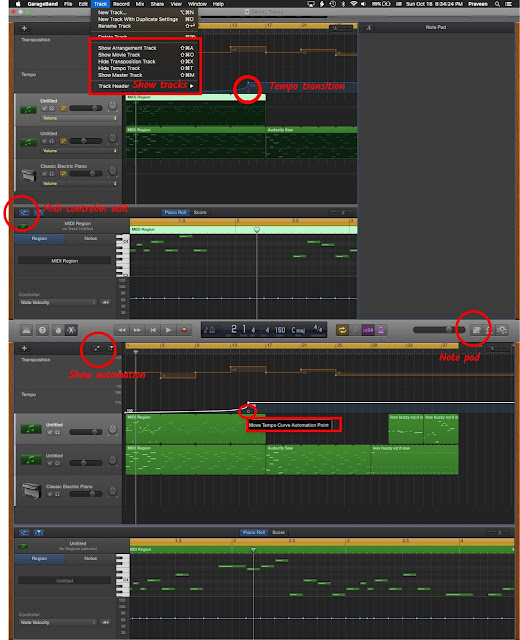The Hidden Garageband Sampler (and other features)

Garageband has some interesting features, made more interesting by the fact that some are quietly hidden away in the program. Here are some hidden and/or notable Garageband features: AUSampler & Effects Yep, Garageband 10 has a sampler that can play an entire keyboard range given a single audio file, but it's not nearly as easy to find as the iOS version's less powerful sampler. Here's how to get to it: 1. Create a new instrument and double click its icon to go to Smart Controls. 2. Hit the "(i)" button in the top right hand corner of the Smart Controls window. 3. Click "plug-ins" to expand it 4. Click instruments → AU Instruments → AUSampler → Stereo 5. Click the keyboard icon in the bottom right of the popup window. 6. Click "Sine 440 built in" 7. Click "choose file" (it's hard to see, but it's right under "Key mappings") 8. Choose file 9. Set the pitch of the file (called "root" in...

